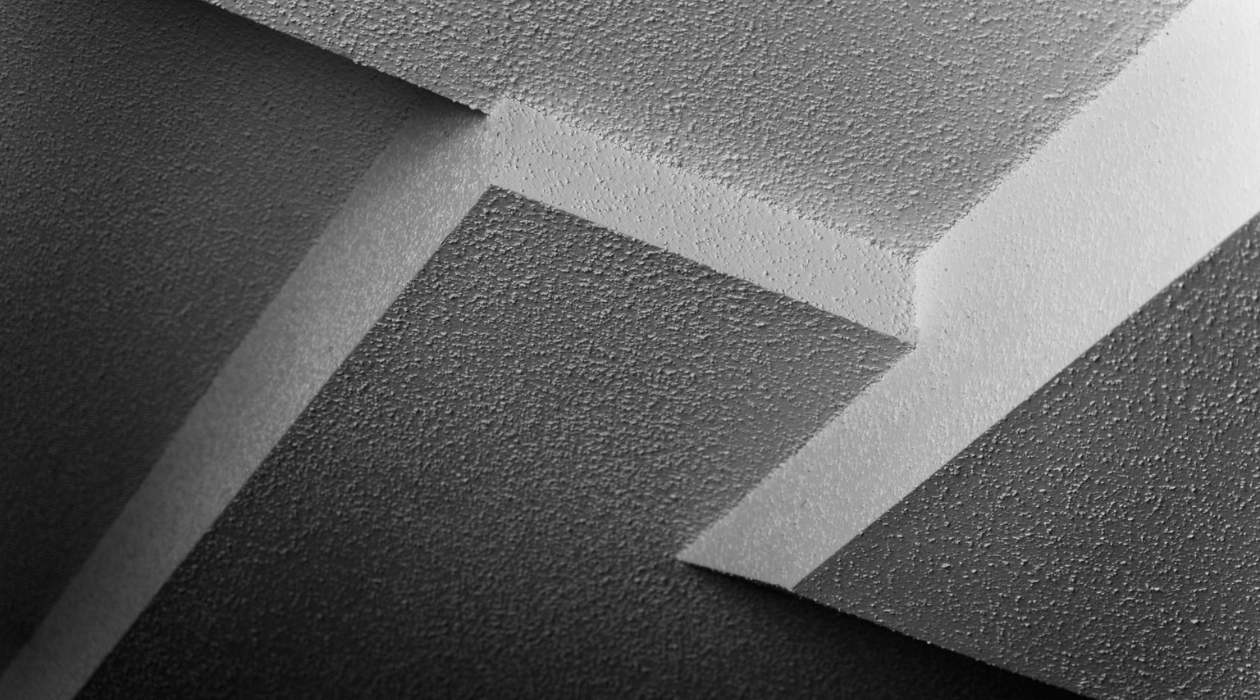

Articles
How To Remove Asbestos Popcorn Ceiling Safely
Modified: January 19, 2024
Learn how to safely remove asbestos popcorn ceiling with our informative articles. Protect yourself and your loved ones from this hazardous material.
(Many of the links in this article redirect to a specific reviewed product. Your purchase of these products through affiliate links helps to generate commission for Storables.com, at no extra cost. Learn more)
Introduction
Asbestos was once a popular material used in construction due to its heat resistance and durability. However, it was later discovered that exposure to asbestos fibers can lead to serious health issues, including lung diseases and cancer. One common area where asbestos was used is in popcorn or textured ceilings.
In the past, popcorn ceilings were popular for their decorative appeal and ability to hide imperfections. However, as awareness about the dangers of asbestos grew, many homeowners started seeking ways to remove the asbestos popcorn ceilings from their homes.
In this article, we will discuss how to safely remove asbestos popcorn ceiling and the necessary precautions to take during the process. It is essential to remember that asbestos removal can be hazardous, and it is highly recommended to hire professionals if you are unsure or uncomfortable with doing it yourself.
Key Takeaways:
- Safely removing asbestos popcorn ceiling involves thorough wetting, scraping, and proper disposal. Prioritize safety, consult professionals, and follow regulations to protect against asbestos exposure.
- Understanding asbestos risks and following safety precautions are crucial for safely removing asbestos popcorn ceiling. Proper preparation, equipment, and disposal ensure a safe removal process.
Read more: How To Know If Popcorn Ceiling Has Asbestos
Understanding Asbestos
Before attempting to remove asbestos popcorn ceiling, it is important to have a basic understanding of what asbestos is. Asbestos is a naturally occurring mineral that was commonly used in building materials due to its strength, heat resistance, and insulation properties.
Asbestos comes in different forms, including chrysotile, amosite, crocidolite, tremolite, anthophyllite, and actinolite. The fibers of asbestos are microscopic and can easily become airborne when disturbed. When these fibers are inhaled, they can lodge in the lungs and cause various health problems.
Exposure to asbestos fibers has been linked to serious illnesses such as mesothelioma, lung cancer, asbestosis, and other respiratory diseases. It is important to note that the health risks associated with asbestos are primarily due to long-term exposure. However, it is always better to err on the side of caution when dealing with any materials containing asbestos.
While newer homes are less likely to contain asbestos, homes built before the 1980s are more likely to have materials such as popcorn ceilings, vinyl floor tiles, insulation, and pipe insulation that may contain asbestos. If you suspect that your popcorn ceiling contains asbestos, it is essential to take the necessary precautions before attempting to remove it.
Why Remove Asbestos Popcorn Ceiling?
There are several reasons why homeowners choose to remove asbestos popcorn ceilings:
- Health concerns: Asbestos fibers can pose a significant health risk when they become airborne and are inhaled. The long-term exposure to asbestos can lead to serious respiratory illnesses, including lung cancer and mesothelioma. Removing the asbestos popcorn ceiling can help eliminate this health hazard.
- Peace of mind: Even if the asbestos popcorn ceiling is not damaged or crumbling, many homeowners prefer to remove it for peace of mind. This is especially true if there are children or family members with respiratory issues in the home. Removing the asbestos popcorn ceiling can alleviate worries about potential asbestos exposure.
- Home renovation: Popcorn ceilings can give a dated and unattractive look to a home. By removing the asbestos popcorn ceiling, homeowners can modernize their space and improve the aesthetics of their rooms. This can add value to the property and make it more appealing to potential buyers.
- Preparation for other renovations: If you are planning to remodel your home or undertake other renovations, removing the asbestos popcorn ceiling may be necessary. It is common practice to remove asbestos-containing materials before starting any major renovation projects to ensure the safety of the occupants.
Regardless of the reason for removing the asbestos popcorn ceiling, it is crucial to follow proper safety protocols to minimize the risk of asbestos fiber release during the removal process.
Safety Precautions
When it comes to removing asbestos popcorn ceiling, safety should be the top priority. Here are some essential safety precautions to follow:
- Asbestos testing: Before starting the removal process, it is crucial to confirm that the popcorn ceiling contains asbestos. Asbestos testing involves taking a small sample of the ceiling material and sending it to a certified laboratory for analysis. This step is important to ensure that proper precautions are taken.
- Professional consultation: While it is possible to remove asbestos popcorn ceiling yourself, it is highly recommended to consult with asbestos removal professionals. They have the expertise, equipment, and training to safely handle asbestos-containing materials, reducing the risk of fiber release and exposure.
- Preparation: Before starting the removal process, ensure that the area is properly isolated from the rest of the house. Use plastic sheeting to seal off the room and prevent asbestos fibers from spreading. Turn off the HVAC system to prevent the circulation of airborne fibers.
- Protective clothing: Wear appropriate protective clothing, including disposable coveralls, gloves, goggles, and a respirator. This will help minimize direct contact with the asbestos fibers and prevent inhalation.
- Wet the ceiling: Before scraping the popcorn texture, wet the ceiling with a mixture of water and a small amount of dishwashing detergent. This helps to reduce the release of asbestos fibers into the air.
- Work in small sections: Divide the ceiling into small sections and work on one section at a time. This will make the removal process more manageable and minimize the potential for fiber release.
- Proper disposal: Asbestos-containing materials must be disposed of in accordance with local regulations. Bag the scraped popcorn ceiling material in heavy-duty plastic bags and seal them tightly. Arrange for proper disposal in a designated facility that accepts asbestos-containing waste.
- Clean-up: After completing the removal process, carefully clean the entire area using wet cleaning methods. Use a HEPA vacuum to clean any remaining dust or debris. Dispose of the cleaning materials and vacuum bags as asbestos waste.
- Professional inspection: Once the removal process is complete, it is recommended to have a professional inspector assess the area to ensure that all asbestos-containing materials have been properly removed.
By following these safety precautions, you can minimize the risk of asbestos exposure and ensure a safe removal process for your popcorn ceiling.
Required Safety Equipment
When it comes to removing asbestos popcorn ceiling, having the right safety equipment is crucial. Here are the essential tools and protective gear you will need:
- Respirator: A high-quality respirator with an N95 or higher rating is necessary to protect yourself from inhaling asbestos fibers. Make sure the respirator fits properly and creates a seal around your face.
- Disposable coveralls: Wear disposable coveralls to prevent asbestos fibers from getting onto your clothing or skin. Make sure the coveralls are made of a material that provides protection against asbestos particles.
- Gloves: Use disposable gloves made of latex or nitrile to minimize direct contact with the asbestos-containing material. Avoid using gloves that may easily tear or puncture.
- Goggles: Wear safety goggles to protect your eyes from any debris or dust that may contain asbestos fibers. Ensure that the goggles fit snugly and provide full coverage.
- Head covering: It is recommended to wear a disposable cap or a head covering to prevent any asbestos fibers from getting into your hair.
- Disposable shoe covers: Use disposable shoe covers to prevent the spread of asbestos fibers to other areas of your home. These covers should be worn over your footwear and disposed of properly after use.
- Plastic sheeting: Use heavy-duty plastic sheeting to seal off the work area and prevent the spread of asbestos fibers. Cover the floors, furniture, and any openings such as vents or doorways with plastic sheeting.
- Water spray bottle: Fill a spray bottle with water to wet the popcorn ceiling before scraping. Wetting the ceiling helps to minimize the release of asbestos fibers into the air.
- HEPA vacuum cleaner: Use a vacuum cleaner with a high-efficiency particulate air (HEPA) filter to clean up any dust or debris after the removal process. A HEPA vacuum ensures that the removed asbestos particles are trapped and not released back into the air.
- Heavy-duty garbage bags: When collecting and disposing of the scraped popcorn ceiling material, use heavy-duty plastic bags that are specifically designed for asbestos waste. Seal the bags tightly to prevent any fiber release.
Having the necessary safety equipment is essential for protecting yourself during the asbestos popcorn ceiling removal process. Remember to dispose of all the used protective gear and asbestos waste properly according to local regulations.
Read more: How To Remove Asbestos Ceiling Tile
Preparing the Area
Before starting the removal process for asbestos popcorn ceiling, it is important to properly prepare the area. Taking these steps will help minimize the spread of asbestos fibers and ensure a safer environment:
- Isolate the work area: Seal off the room where the popcorn ceiling is located by covering doorways, vents, and any other openings with plastic sheeting. This will prevent asbestos fibers from spreading to other areas of your home.
- Turn off HVAC systems: Shut off any heating, ventilation, and air conditioning (HVAC) systems to prevent the circulation of airborne asbestos fibers. Cover air vents with plastic sheeting to further prevent fiber release.
- Remove furniture and belongings: Clear the room of any furniture, decorations, or other belongings. This will make the removal process easier and minimize the risk of contamination with asbestos fibers.
- Cover the floors: Lay down plastic sheeting or disposable drop cloths on the floor to catch any falling debris during the removal process. This will facilitate clean-up and make it easier to dispose of any asbestos-containing materials.
- Close off adjacent areas: If there are adjacent rooms or areas connected to the work area, close the doors and seal any cracks or gaps with plastic sheeting. This will prevent the migration of asbestos fibers into other parts of your home.
- Ensure adequate ventilation: While it may seem counterintuitive, maintaining proper ventilation is important during the removal process. Open windows and use fans to create a cross breeze, which helps to remove airborne particles and freshen the air.
- Wear appropriate protective gear: Before entering the work area, ensure that you are wearing the proper protective gear, including a respirator, disposable coveralls, gloves, goggles, and shoe covers. This will minimize your exposure to asbestos fibers.
- Inform household members: Inform other members of your household about the removal process and the precautions they should take. Advise them to avoid entering the work area and to stay away from the affected room until the removal is complete.
Properly preparing the area for asbestos popcorn ceiling removal will help create a controlled environment and reduce the risk of asbestos fiber release. Remember to follow all safety protocols and guidelines throughout the entire process.
When removing asbestos popcorn ceiling, make sure to wear protective gear such as a mask, gloves, and goggles. Wet the ceiling with a spray bottle to minimize the release of asbestos fibers. Dispose of the material properly according to local regulations.
Wetting the Ceiling
Before you can begin removing the popcorn texture from the asbestos ceiling, it is crucial to wet the ceiling surface. This step is important as it helps to minimize the release of asbestos fibers into the air. Here’s how to properly wet the ceiling:
- Prepare your tools: Fill a spray bottle with water and add a small amount of dishwashing detergent. The detergent helps break down the surface tension of the water and allows for better penetration.
- Test on a small section: Before wetting the entire ceiling, test the water spray on a small section to ensure that it does not cause any damage or discoloration.
- Mist the ceiling: Starting from one corner, mist the ceiling surface with the water and detergent mixture. Make sure to apply an even coat, ensuring that the entire area is thoroughly wet.
- Allow the water to soak in: Let the water sit for several minutes to allow it to penetrate the popcorn texture and the asbestos-containing material underneath. This will help soften the texture and minimize the release of asbestos fibers during the scraping process.
- Reapply as needed: If the sprayed water starts to dry before you begin scraping, apply additional mist to keep the surface damp. It is important to work on small sections at a time so you can maintain a wet surface throughout the removal process.
- Use caution when working near electrical fixtures: Take extra precautions when wetting the ceiling near light fixtures or electrical outlets. Ensure that the power is turned off to these fixtures to minimize the risk of electrical shock.
Wetting the ceiling is an essential step in safely removing asbestos popcorn ceiling. It helps to control the release of asbestos fibers, making the removal process less hazardous. Remember to always wear appropriate protective gear and follow proper safety guidelines throughout the entire process.
Scraping the Popcorn Texture
Once the asbestos popcorn ceiling has been properly wet, you can begin the process of scraping off the texture. It is crucial to follow these steps to ensure a safe and effective removal:
- Choose the right tool: Select a scraping tool that is suitable for the job. A wide putty knife or a specialized popcorn ceiling scraper with a long handle can be used to gently scrape off the textured material.
- Work in small sections: Divide the ceiling into manageable sections to make the process more controlled. Start scraping from one side of the section and work your way across.
- Hold the scraper at the right angle: Hold the scraping tool at a shallow angle, approximately 30 degrees, to avoid damaging the underlying surface. Apply gentle pressure as you scrape to minimize the release of asbestos fibers.
- Scrape in a consistent motion: Use smooth, even strokes to scrape off the popcorn texture. Avoid applying excessive force or scraping too aggressively, as this can increase the risk of releasing asbestos fibers into the air.
- Collect the scraped material: As you scrape off the popcorn texture, collect the removed material in plastic bags designated for asbestos waste. Seal the bags tightly to prevent any fiber release.
- Dispose of the waste properly: Dispose of the collected asbestos-containing material in accordance with local regulations. Remember to label the bags clearly as asbestos waste, and arrange for proper disposal at a designated facility.
- Be thorough: Ensure that you thoroughly scrape off all the popcorn texture. Take care not to miss any areas, as even small remaining patches can still pose a health risk.
- Take breaks as needed: Removing popcorn ceiling texture can be a physically demanding task. Take regular breaks to rest and hydrate to avoid fatigue and maintain focus during the scraping process.
- Avoid sanding the surface: Sanding the ceiling surface is not recommended, as it can release a significant amount of asbestos fibers into the air. Stick to scraping as the primary method of removing the popcorn texture.
- Check for any damage: After scraping off the textured material, inspect the ceiling surface for any damage or areas that may require additional attention. Make any necessary repairs before proceeding to the next steps of the removal process.
Scraping off the asbestos popcorn texture requires caution and attention to detail. By following these guidelines, you can safely remove the texture without compromising your health or the air quality in your home.
Collection and Disposal of Scrapings
Proper collection and disposal of the scraped asbestos popcorn ceiling material is crucial to ensure the safe removal of asbestos fibers. Follow these steps to handle the collected scrapings:
- Double bag the scrapings: Transfer the collected popcorn texture scrapings into two layers of heavy-duty plastic bags. Double bagging helps to minimize the risk of any fiber release during transportation and disposal.
- Seal the bags tightly: Seal the bags tightly using duct tape or zip ties to prevent any potential leakage or fiber release. Make sure the bags are securely closed and no air can escape.
- Label the bags: Clearly label the bags as asbestos waste. Use permanent markers to write “Asbestos” and any other required information such as the date of removal. This will notify waste management personnel of the presence of hazardous materials.
- Contact a licensed asbestos disposal facility: Contact a licensed asbestos disposal facility in your area to determine the proper procedures for disposing of the asbestos-containing material. They will provide guidance on the specific requirements for transport and disposal of the bags.
- Transport the bags safely: When transporting the bags to the disposal facility, take precautions to prevent any damage or disturbance to the asbestos-containing material. Place the bags in a sturdy container, such as a sealed plastic bin, to ensure their safe transport.
- Follow local regulations: Adhere to all local regulations and guidelines regarding the disposal of asbestos waste. Different regions may have specific requirements, so it is crucial to follow the proper procedures to ensure compliance and protect the environment.
- Do not dispose of in regular trash: Never dispose of asbestos-containing material in regular household trash bins. Improper disposal can lead to potential health hazards for waste management personnel and the community.
- Keep documentation: Keep a record of the proper disposal of the asbestos scrapings, including any receipts or certificates provided by the disposal facility. Documentation serves as proof of compliance with regulations and can be valuable for future reference.
- Consider professional disposal services: If you are unsure about handling the disposal process on your own, consider hiring a licensed asbestos removal professional or waste disposal company. They have the expertise and equipment to safely collect, transport, and dispose of the asbestos-containing material.
Proper collection and disposal of the scraped asbestos popcorn ceiling material are essential to prevent the release of asbestos fibers into the environment. By following these guidelines and complying with local regulations, you can ensure the safe and responsible disposal of the waste.
Read more: How To Remove Mold From Popcorn Ceiling
Cleaning the Area
After removing the asbestos popcorn ceiling, it is important to thoroughly clean the area to ensure the removal of any remaining asbestos fibers. Follow these steps to clean the area effectively:
- Remove any remaining debris: Use a dustpan and broom to sweep up any loose debris from the floor and surfaces. Avoid using a vacuum cleaner at this stage, as it may stir up dust and potentially release asbestos fibers into the air.
- Wet cleaning method: Use a wet cleaning method to further eliminate any potential asbestos fibers. Dampen a disposable cloth or sponge with water and wipe down all surfaces, including walls, windowsills, baseboards, and furniture.
- Use a HEPA vacuum cleaner: Once the wet cleaning is complete and the area is dry, use a vacuum cleaner equipped with a high-efficiency particulate air (HEPA) filter to thoroughly clean the floor and other surfaces. A HEPA filter is designed to capture tiny particles, including asbestos fibers.
- Vacuum the furniture: If any furniture or upholstery was in the area during the removal process, use the HEPA vacuum cleaner to remove any potential asbestos fibers from them as well.
- Dispose of cleaning materials: Place all used cleaning materials, including damp cloths, sponges, and disposable wipes, into heavy-duty plastic bags. Seal the bags tightly and dispose of them as asbestos waste.
- Change clothing and clean yourself: After completing the cleaning process, remove and dispose of your disposable coveralls, gloves, shoe covers, and any other protective gear. Take a shower to ensure that any traces of asbestos fibers on your body are thoroughly washed away.
- Monitor the area: After cleaning, monitor the area for any signs of remaining asbestos debris or dust. If you notice any, repeat the cleaning process until all surfaces are free from potential asbestos contaminants.
- Consider professional post-cleaning assessment: If you have concerns about the effectiveness of your cleaning efforts or want assurance that the area is free from asbestos fibers, consider hiring a licensed asbestos testing and removal professional to conduct a post-cleaning assessment.
Properly cleaning the area after removing asbestos popcorn ceiling is essential to ensure the safety of your home and its occupants. By following these cleaning steps and taking necessary precautions, you can minimize any potential asbestos exposure and create a clean and healthy environment.
Final Inspection and Testing
After removing the asbestos popcorn ceiling and thoroughly cleaning the area, it is important to conduct a final inspection and testing to ensure that the space is free from any remaining asbestos fibers. Here are the steps to follow:
- Visual inspection: Conduct a visual inspection of the entire area to check for any signs of remaining asbestos debris or texture. Look for any areas that may have been missed during the cleaning process.
- Use a flashlight: Use a flashlight to inspect hard-to-reach areas such as corners, edges, and light fixtures. Shine the light at different angles to examine surfaces for any visible asbestos remnants.
- Consider air monitoring: If you want an extra level of assurance, you can hire a licensed asbestos testing company to perform air monitoring. These professionals will take air samples to test for the presence of airborne asbestos fibers.
- Consult with professionals: If you have any doubts or concerns about the effectiveness of the removal process, it is advisable to consult with an asbestos removal professional. They can conduct a thorough inspection, provide expert guidance, and ensure compliance with safety standards.
- Follow local regulations: Familiarize yourself with the regulations and guidelines related to asbestos removal in your area. Some jurisdictions may require a final inspection and/or testing by certified professionals before considering the project complete.
- Keep records: Keep detailed records and documentation of the removal process, including any inspection reports, test results, and certificates. These records can be valuable for future reference, potential home sales, or insurance purposes.
- Stay vigilant: Even after the removal and inspection process, it is important to remain vigilant for any signs of asbestos-related issues. If you notice any changes in air quality, detect a musty odor, or experience respiratory symptoms, contact a professional to assess the situation immediately.
By conducting a final inspection and testing, you can ensure the effectiveness of the asbestos popcorn ceiling removal and have peace of mind knowing that the area is safe for occupancy. It is always better to prioritize safety and seek professional assistance when in doubt.
Conclusion
Removing asbestos popcorn ceiling can be a challenging task, but it is essential for the safety and well-being of your home and its occupants. By following proper safety precautions, you can effectively remove the asbestos-containing material while minimizing the risk of asbestos fiber release.
Understanding the nature of asbestos and its potential health risks is crucial in approaching the removal process with care and responsibility. It is always a good practice to consult with professionals when dealing with asbestos to ensure proper handling and disposal.
From conducting asbestos testing and taking safety measures to wetting the ceiling, scraping the popcorn texture, and disposing of the scrapings, each step should be approached with caution and meticulousness. Additionally, ensuring a thorough cleaning of the area and conducting a final inspection and testing will provide reassurance that the space is free from any remaining asbestos contaminants.
Remember, your safety and the safety of those around you should be the top priority. If you are unsure about any aspect of the asbestos popcorn ceiling removal process, it is recommended to seek professional assistance to ensure proper handling and compliance with regulations.
By responsibly and safely removing asbestos popcorn ceiling, you can achieve a safer living environment, improve the aesthetic appeal and value of your home, and have peace of mind knowing that you have taken the necessary steps to protect yourself and your loved ones from the health hazards associated with asbestos exposure.
Note: The information provided in this article is for general guidance purposes only and should not be considered as professional advice. It is always recommended to consult with trained professionals regarding asbestos removal and disposal.
Frequently Asked Questions about How To Remove Asbestos Popcorn Ceiling Safely
Was this page helpful?
At Storables.com, we guarantee accurate and reliable information. Our content, validated by Expert Board Contributors, is crafted following stringent Editorial Policies. We're committed to providing you with well-researched, expert-backed insights for all your informational needs.
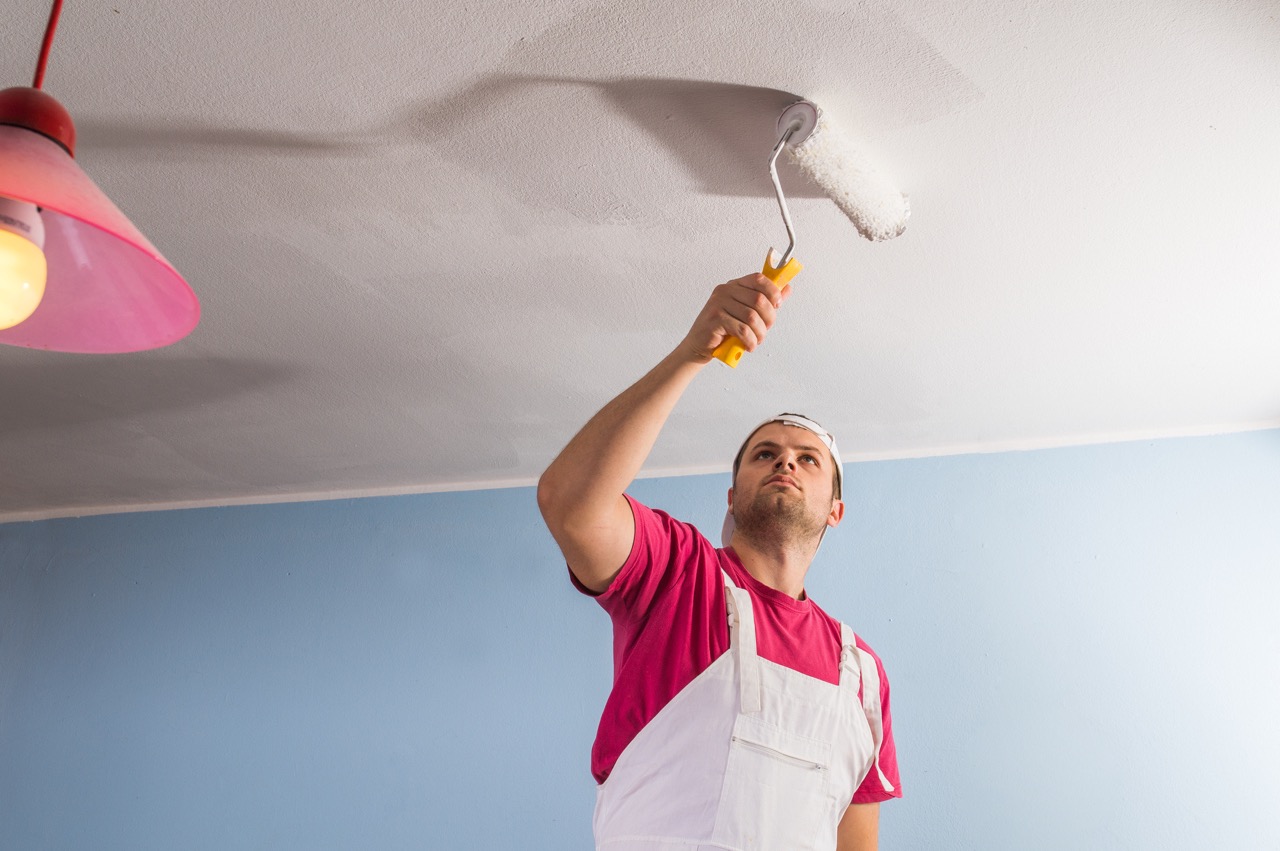
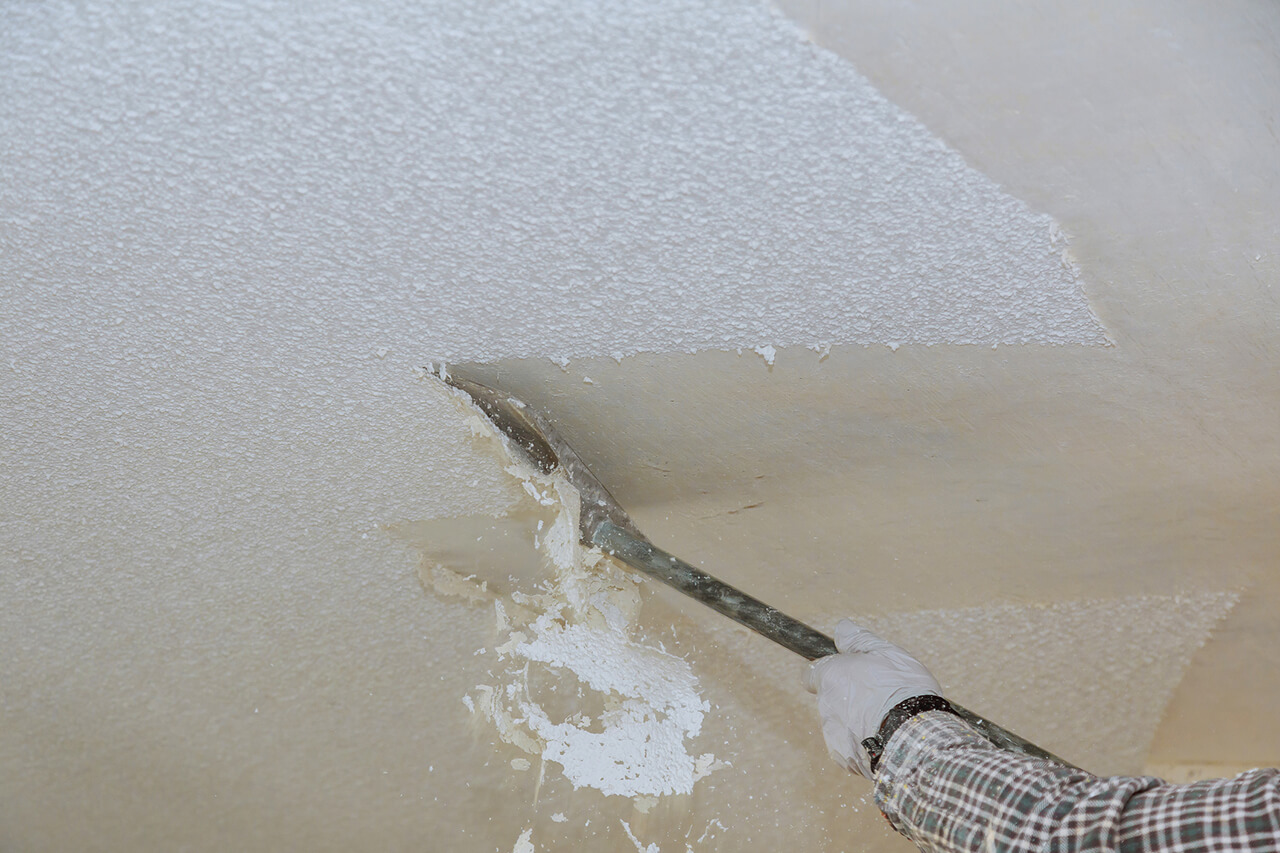
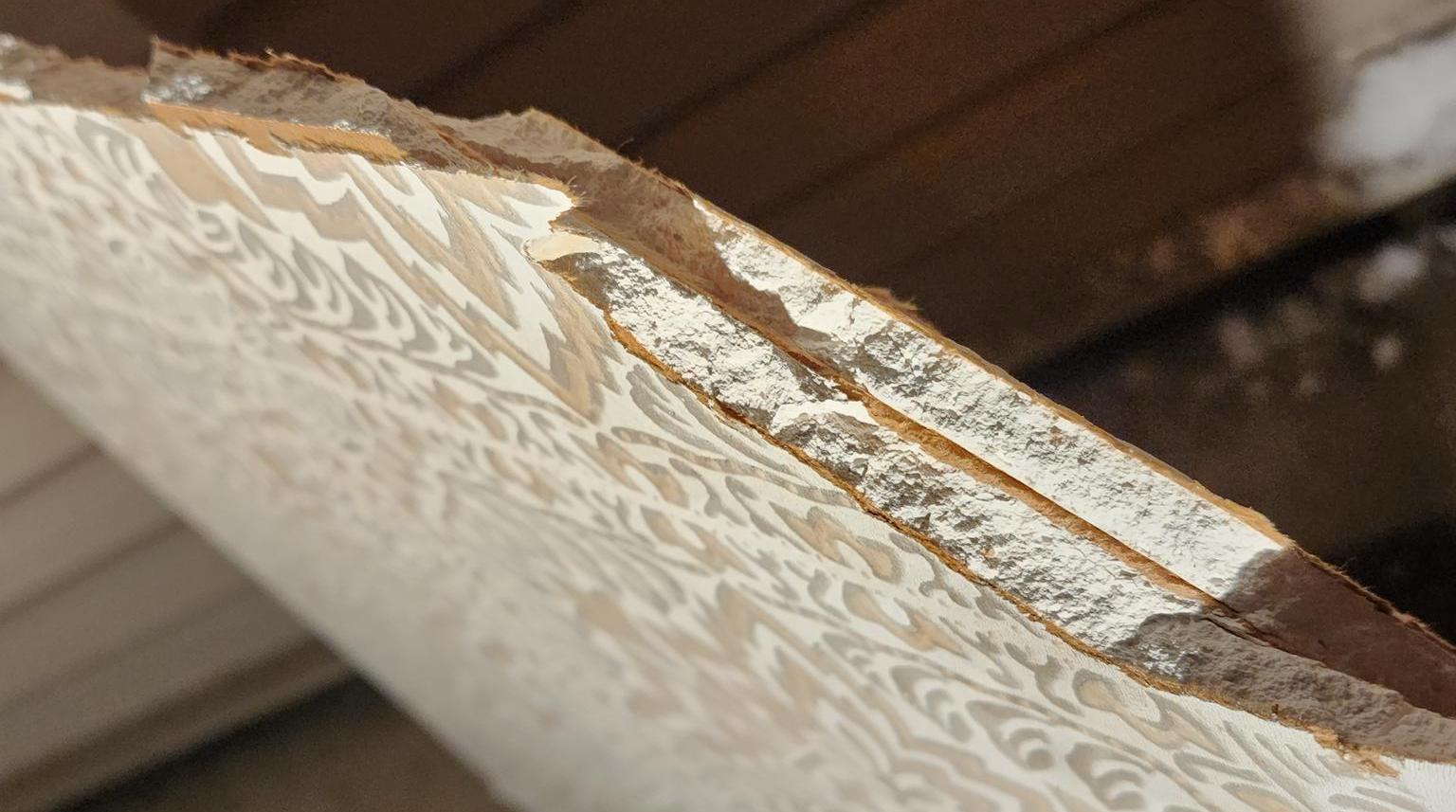
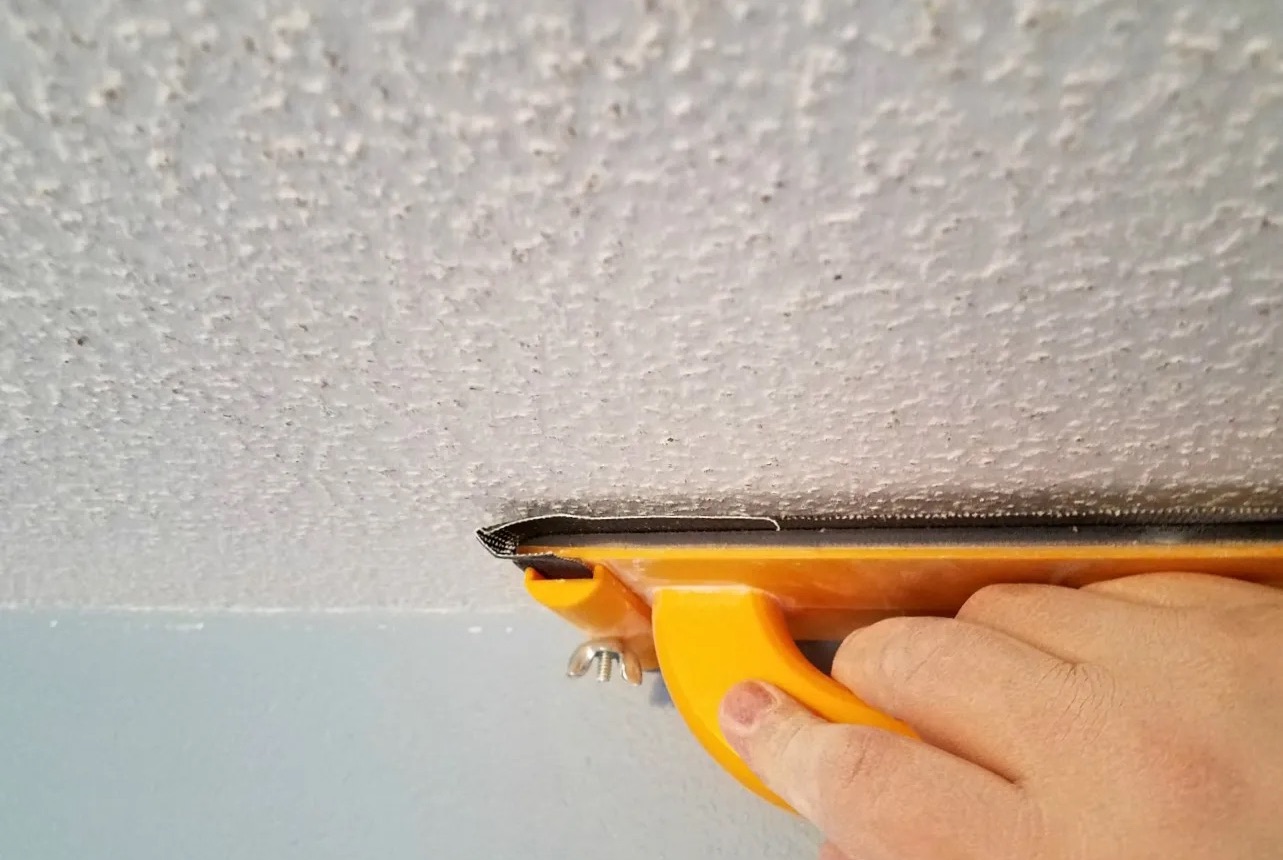
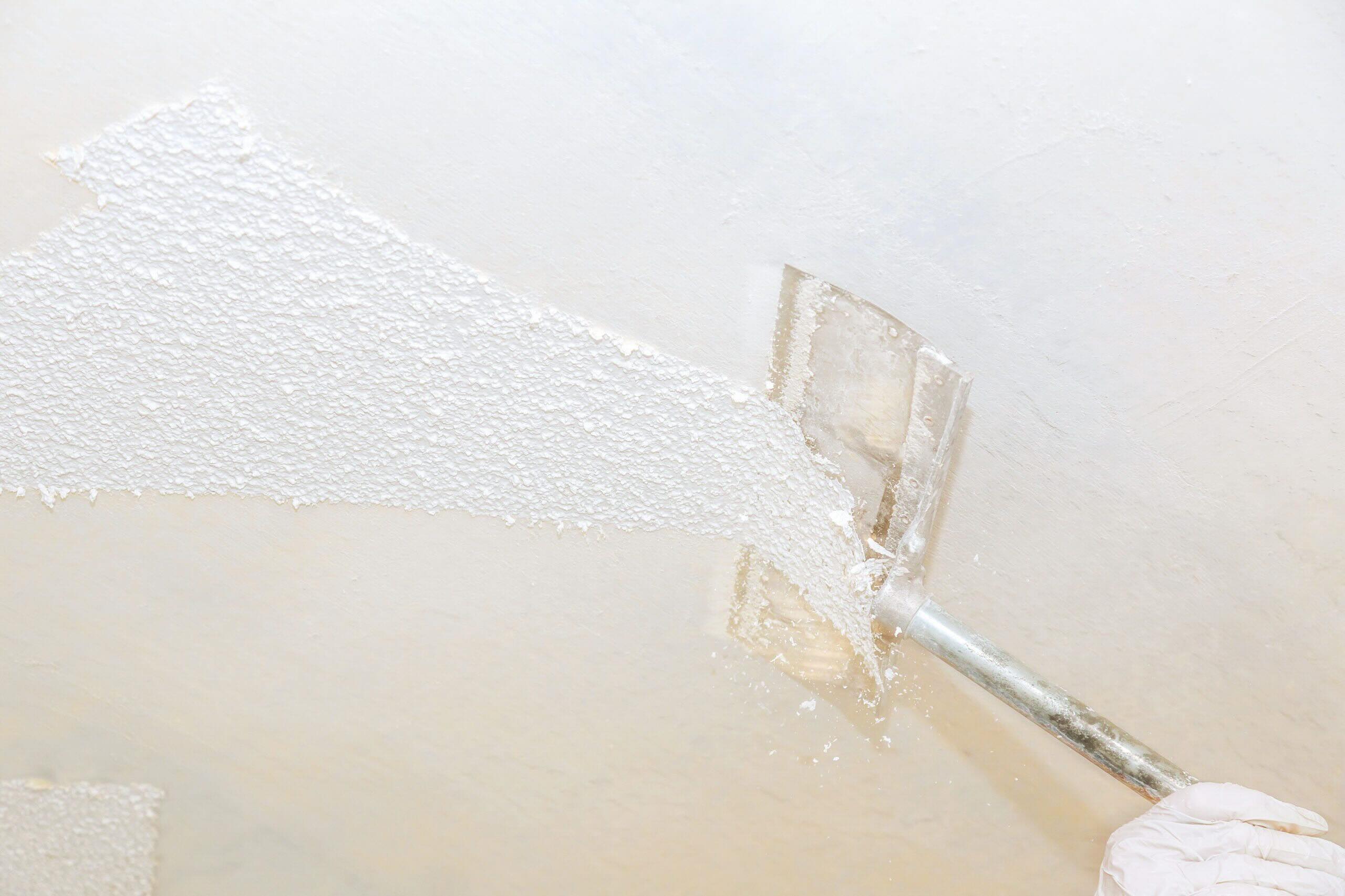
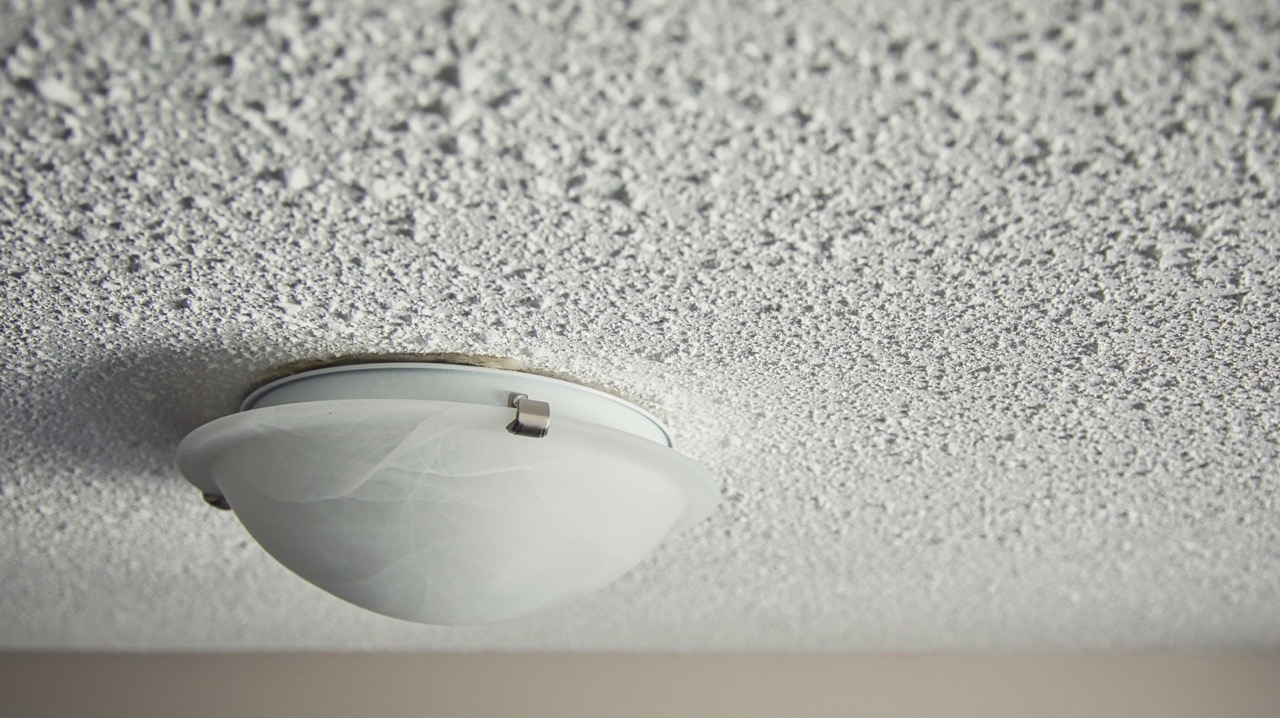
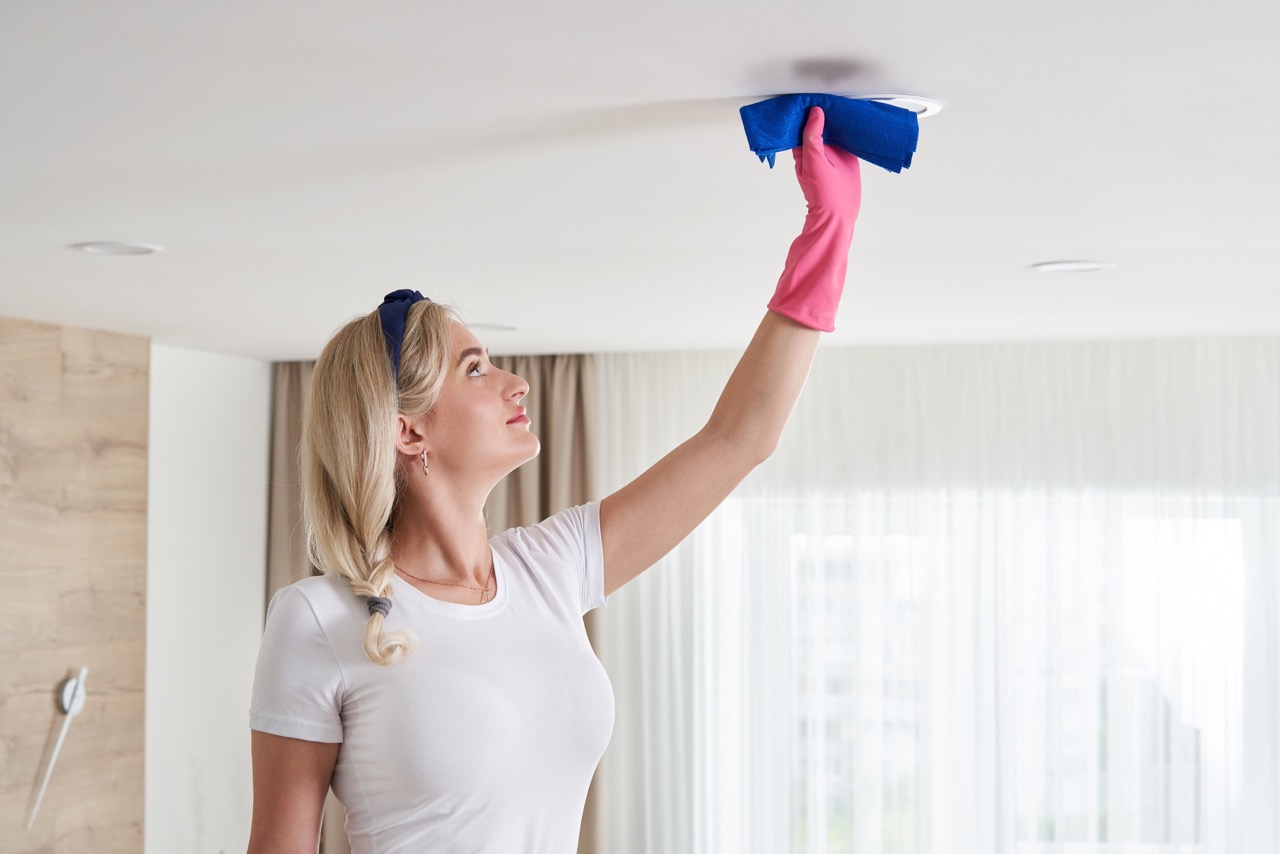
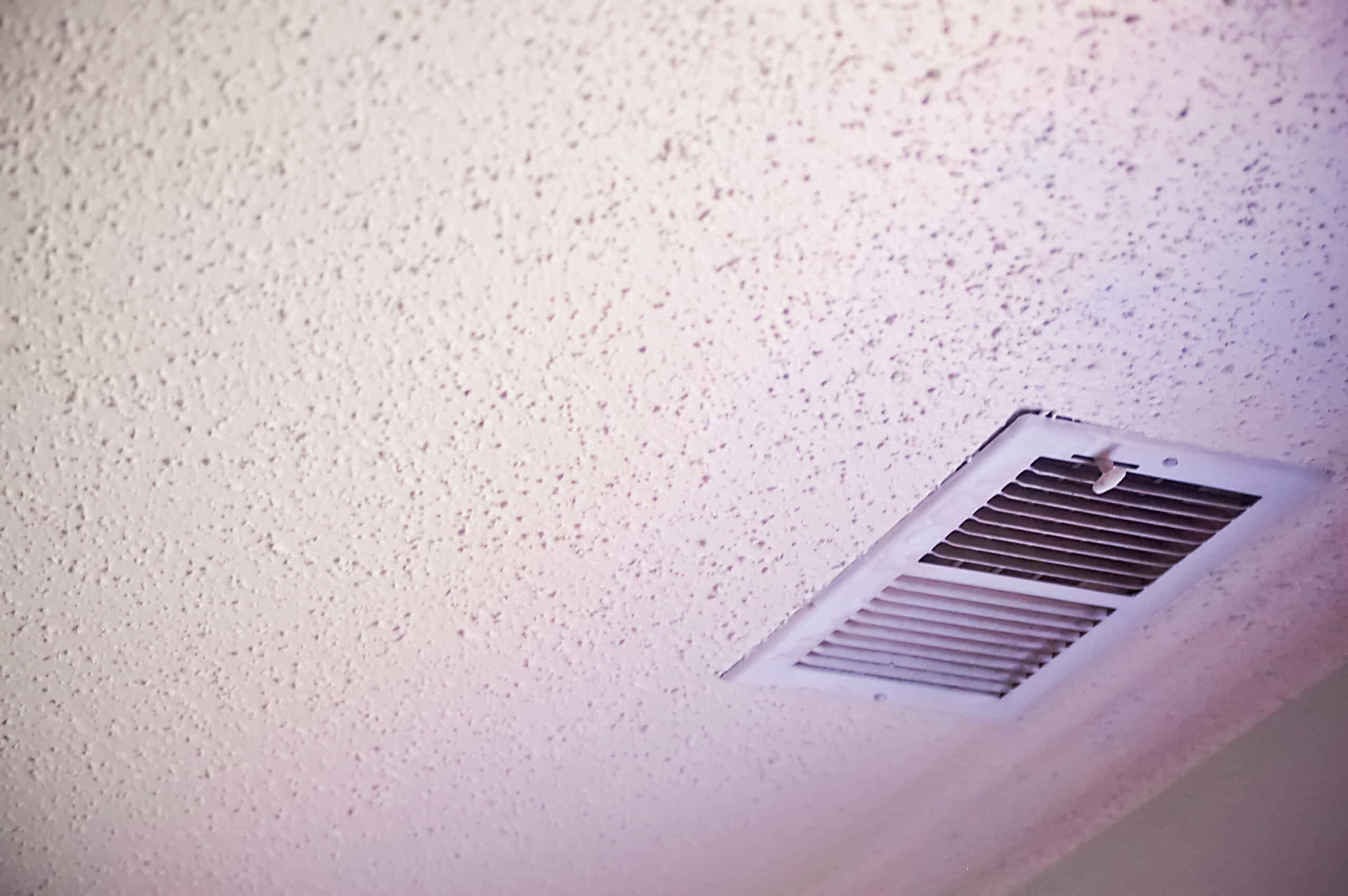
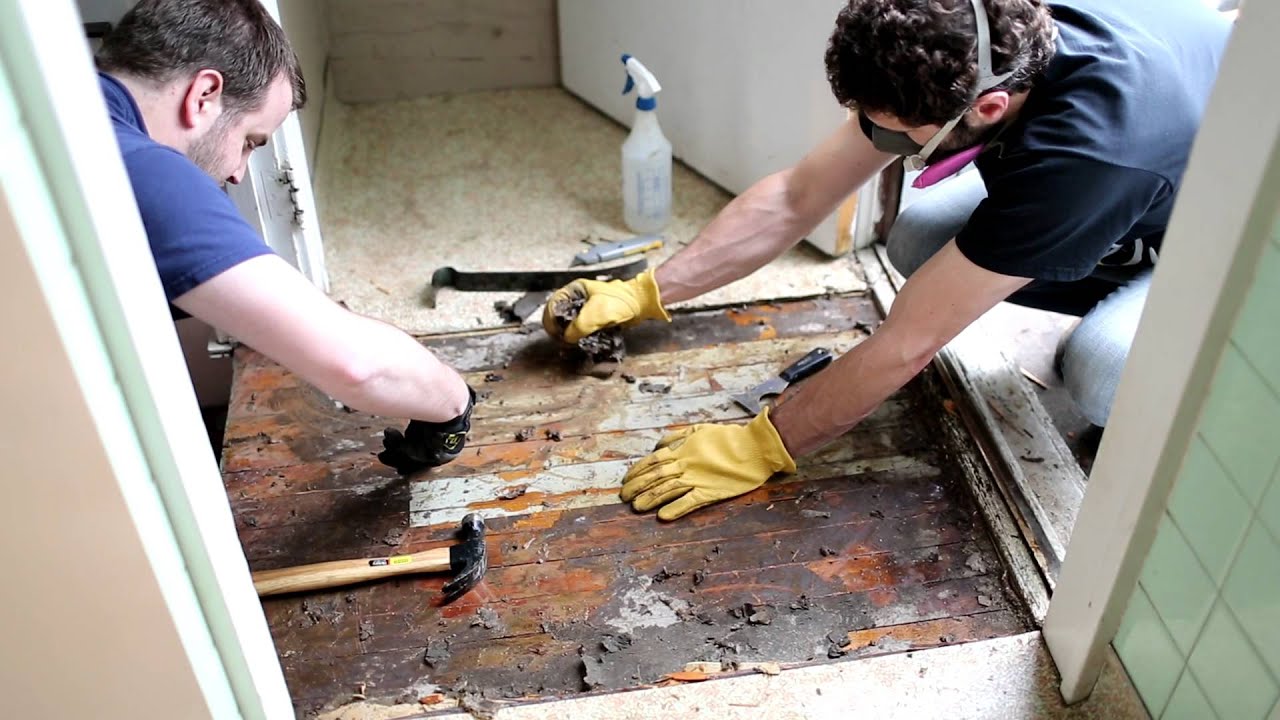
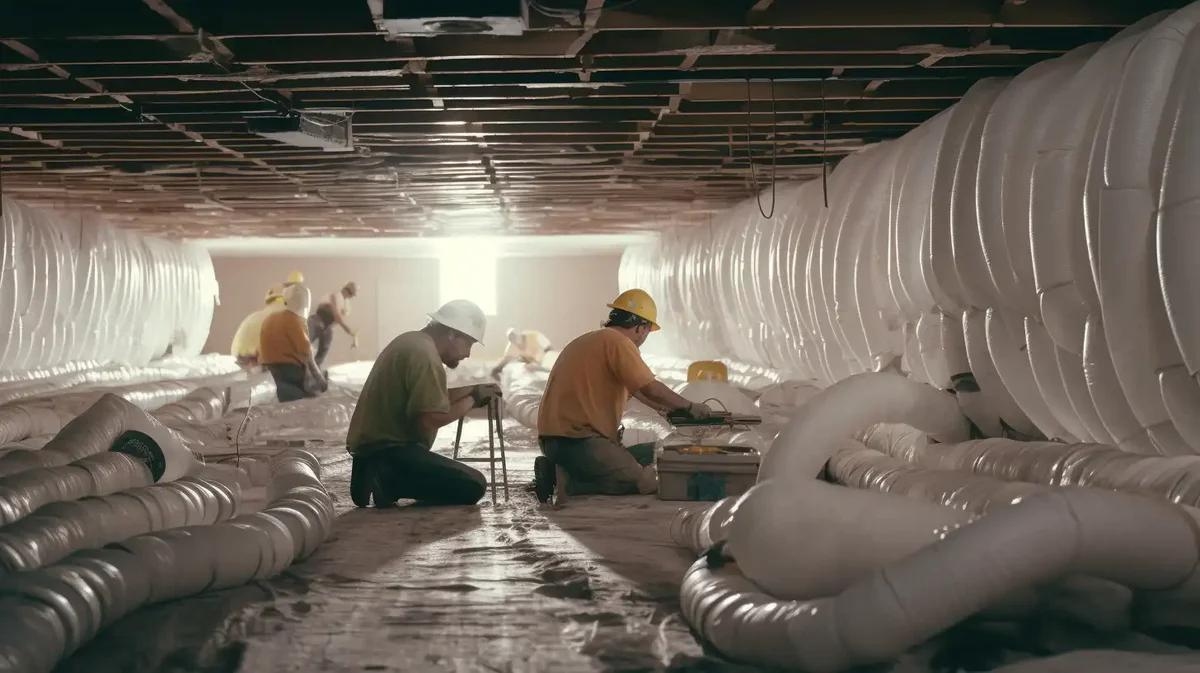
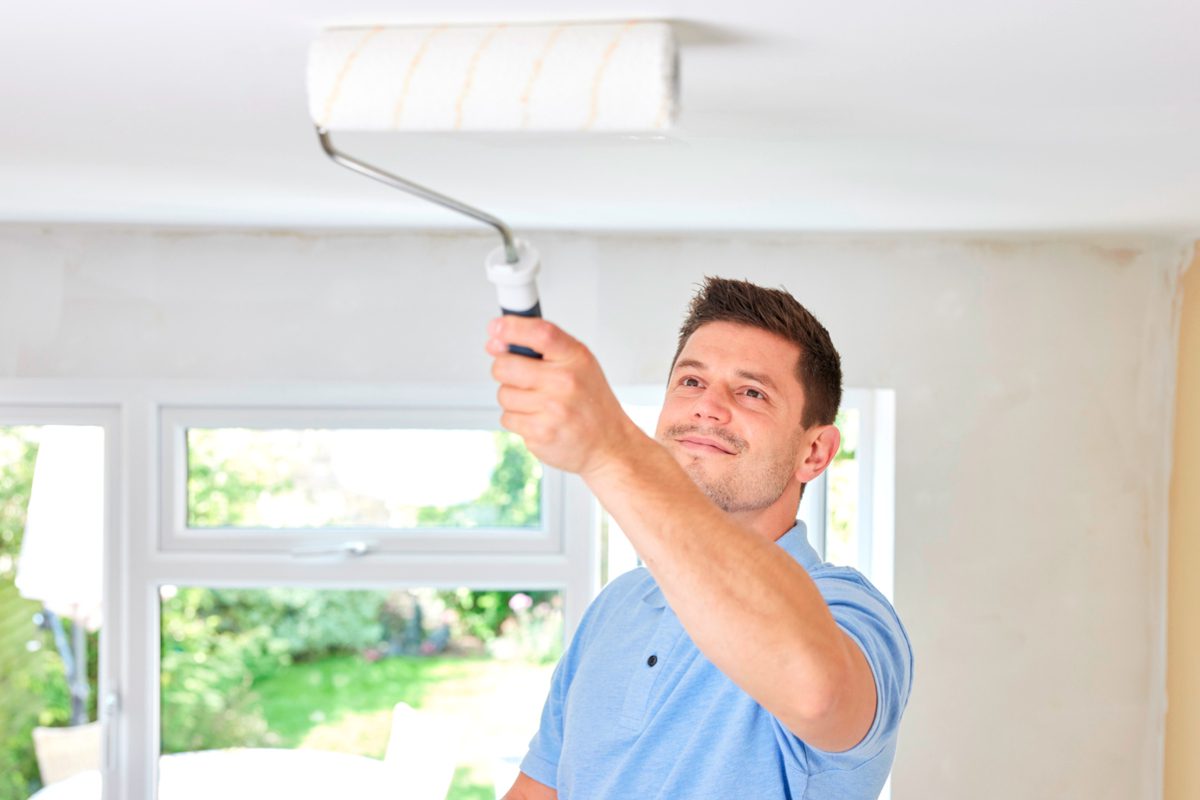
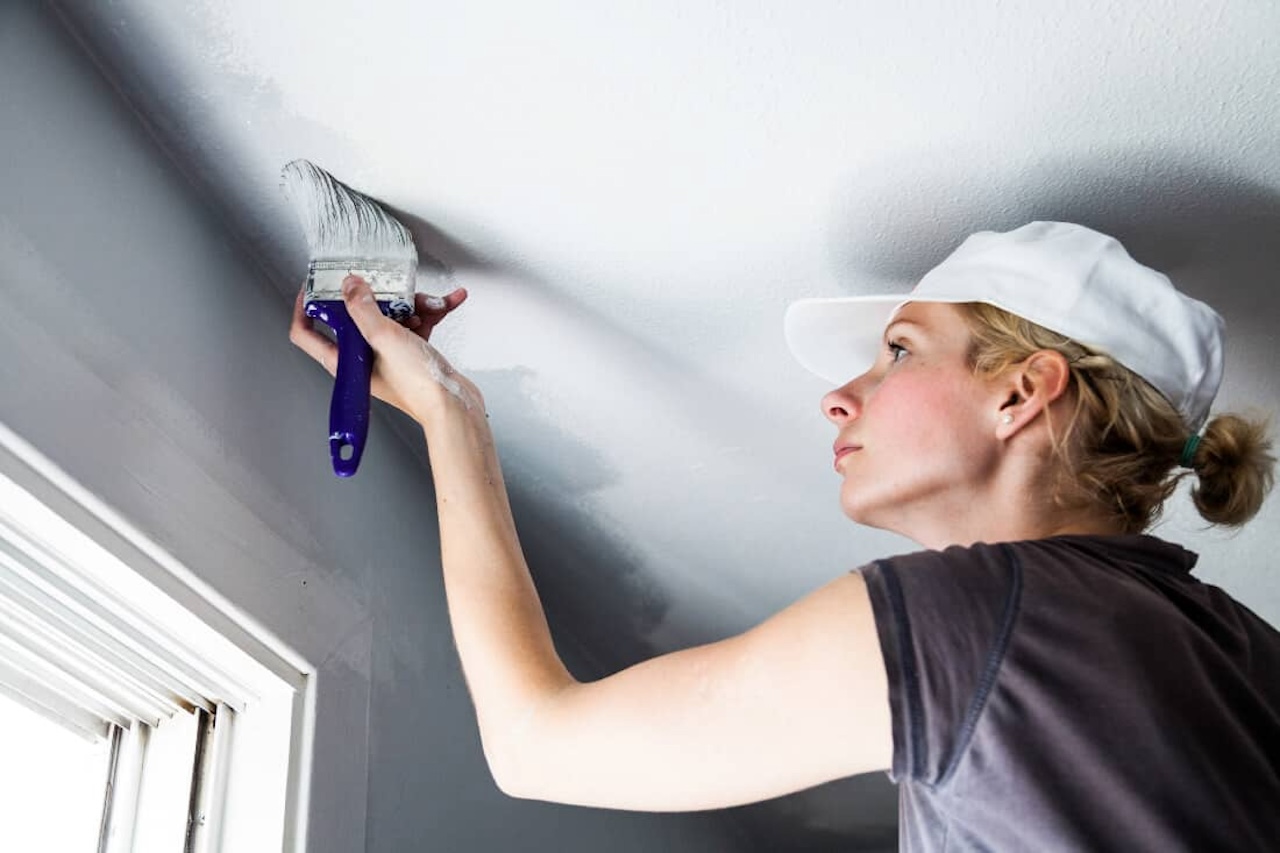
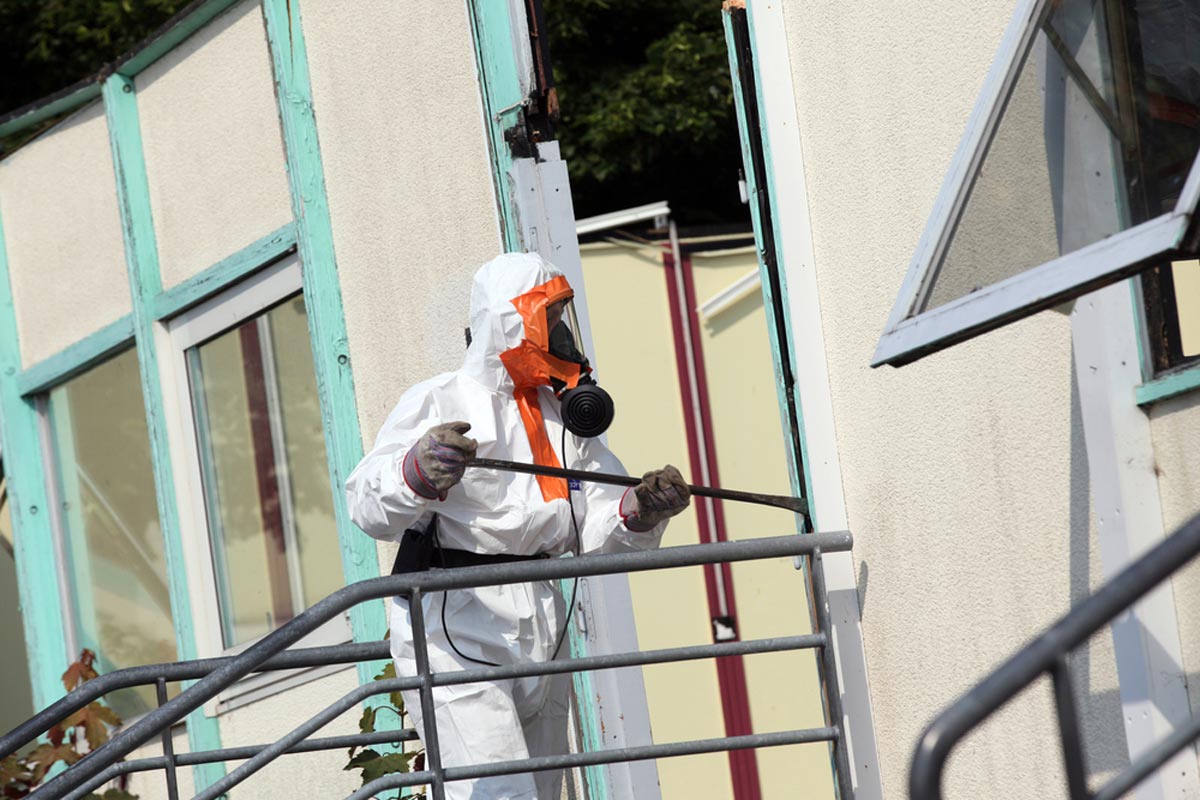

0 thoughts on “How To Remove Asbestos Popcorn Ceiling Safely”